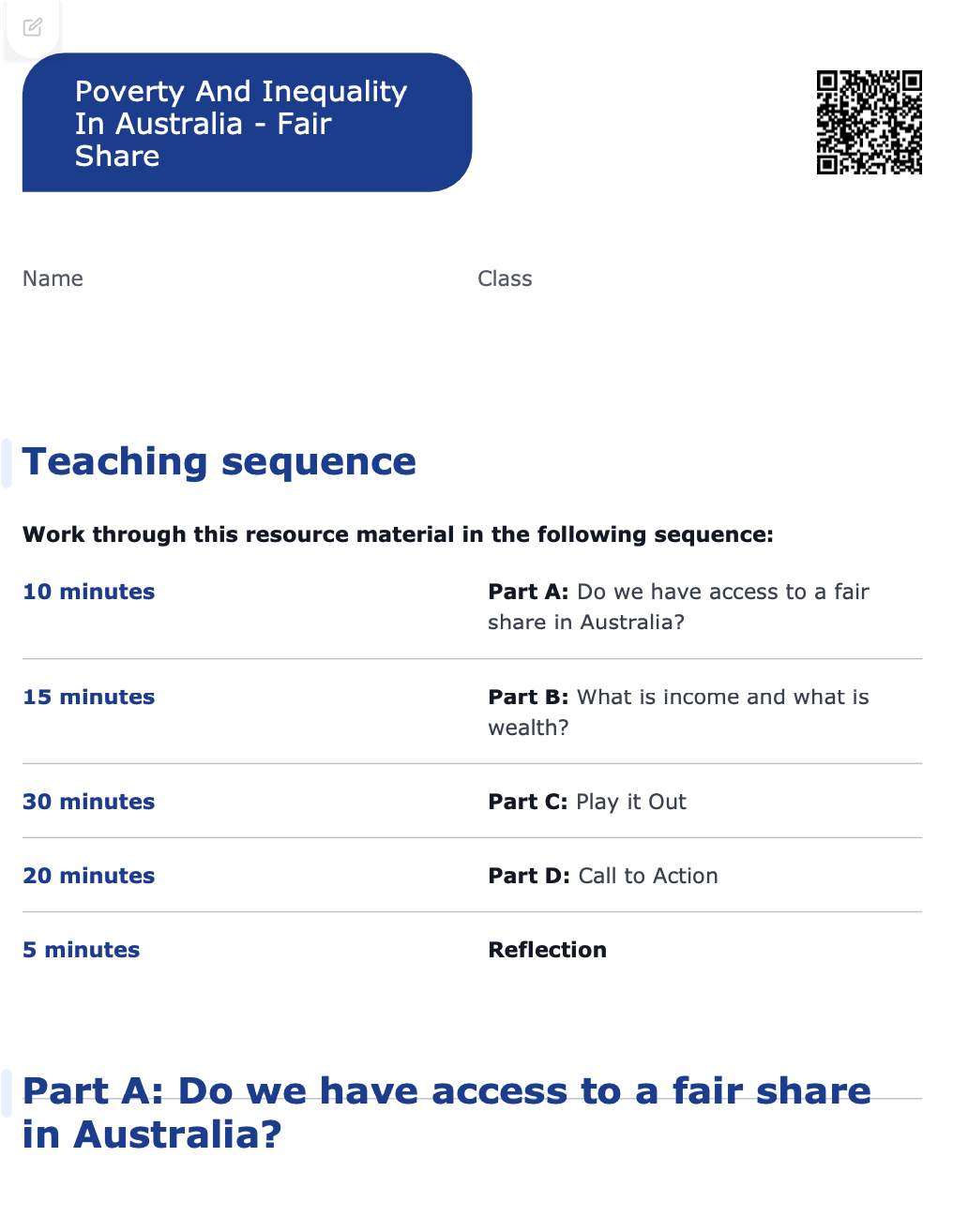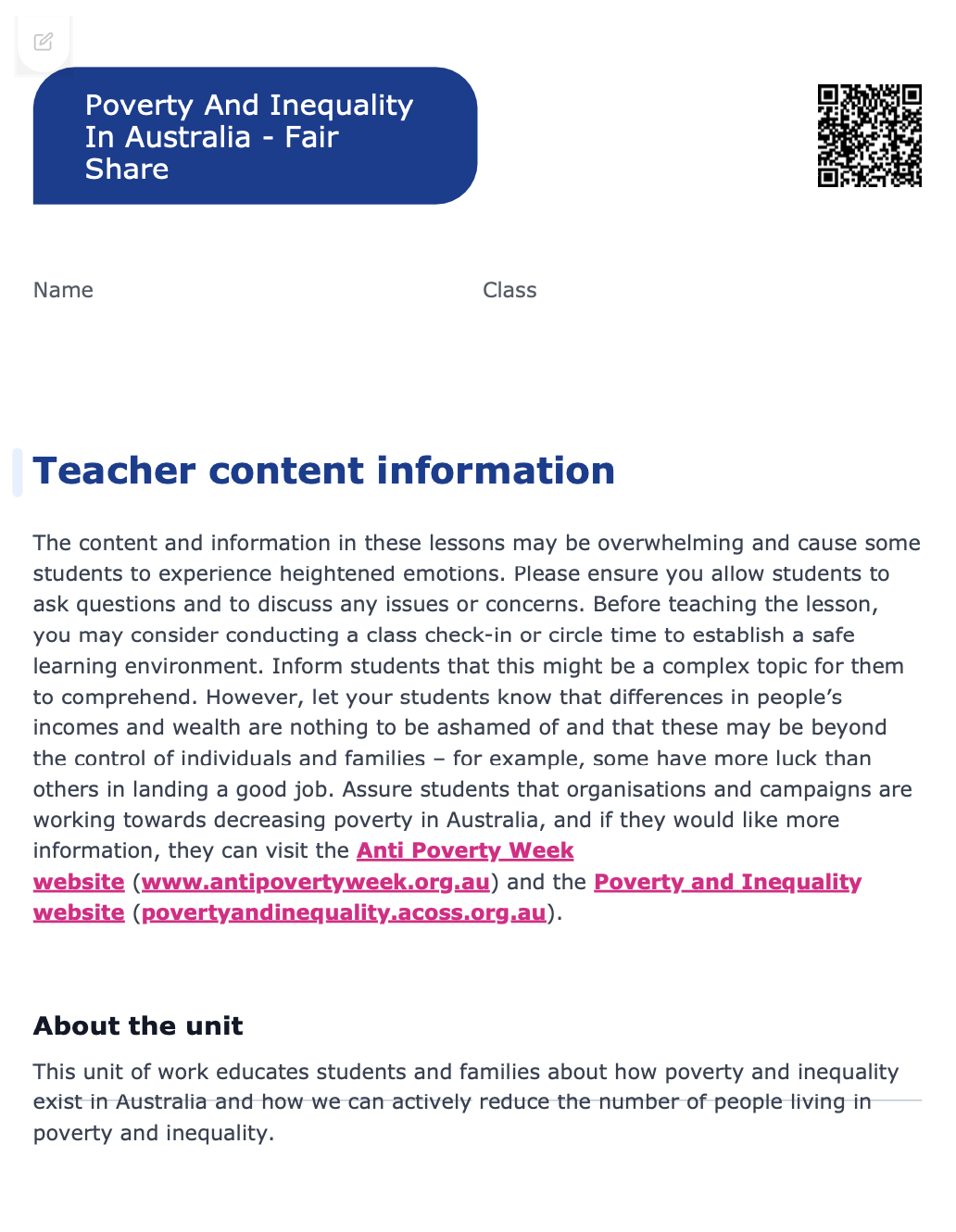Lesson summary
This lesson presents students with an introduction to income and wealth. The class will watch an animated YouTube clip that aims to address the meaning of income and wealth inequality in Australia and why it is problematic.
To help students understand the distribution of wealth, they will use their mathematical thinking skills to work out fractions (of a whole) on a number line and in simple data displays – using the current ABS data.
A practical and interactive exercise will encourage students to play a game of Monopoly based on income and wealth inequality statistics. Students should begin to realise how their income and inequality can affect their ability to make purchases (and remain in the game) compared to other players.
Learning intentions:
Students will...
- understand what income and wealth is
- identify the inequality of income and wealth in Australia
- discover how inequality affects all Australian households.
Success criteria:
Students can...
- articulate the difference between highest 20%, middle 20% and lowest 20% of incomes and wealth in Australia
- apply their knowledge of income and wealth inequality into real-life situations
- reflect on inequalities and brainstorm changes that need to be implemented to reduce poverty in Australia.
Lesson guides and printables
Curriculum links
Select your curriculum from the options below.
Lesson details
Skills
This lesson is designed to build students’ competencies in the following skills:
- communication
- creativity
- critical thinking
- empathy
- ethical understanding
- global citizenship
- initiative
- problem solving
- collaboration
Curriculum Mapping
Australian Curriculum content descriptions:
Year 3 Mathematics:
- Recall multiplication facts of two, three, five and ten and related division facts (ACMNA056)
- Represent and solve problems involving multiplication using efficient mental and written strategies and appropriate digital technologies (ACMNA057)
- Represent money values in multiple ways and count the change required for simple transactions to the nearest five cents (ACMNA059)
Year 4 Mathematics:
- Recall multiplication facts up to 10 × 10 and related division facts (ACMNA075)
- Develop efficient mental and written strategies and use appropriate digital technologies for multiplication and for division where there is no remainder (ACMNA076)
- Solve problems involving purchases and the calculation of change to the nearest five cents with and without digital technologies (ACMNA080)
Syllabus outcomes: MA2-2WM, MA2-3WM, MA2-4NA, MA2-5NA, MA2-6NA.
General capabilities: Numeracy, Creative and Critical Thinking, Ethical Understanding.
Relevant parts of Year 3 achievement standards:
At the end of grade 3 students recognise the connection between addition and subtraction and solve problems using efficient strategies for multiplication.
Relevant parts of Year 4 achievement standards:
At the end of grade 4 students choose appropriate strategies and calculations involving multiplication and division.
UN Sustainable Development Goals
UN SDG 1: End poverty in all its forms everywhere
- Target: 1.1: By 2030, eradicate extreme poverty for all people everywhere, currently measured as people living on less than $1.25 a day.
- Target: 1.1: By 2030, ensure that all men and women, in particular the poor and the vulnerable, have equal rights to economic resources, as well as access to basic services, ownership and control over land and other forms of property, inheritance, natural resources, appropriate new technology and financial services, including microfinance.
Resources Required
- Access to the Internet and the YouTube video
- A device capable to project and present the YouTube clip to class (ensure sound works)
- Dice (6 sided) per group
- Printed copies of Monopoly Game Board per group
Additional Info
Time required: 90 mins
Level of teacher scaffolding: Medium – facilitate class discussion
These lessons have been designed in consultation with Anti-Poverty Week and ACOSS/UNSW Poverty and Inequality Partnership.
The content and information in these lessons may be overwhelming and cause some students to experience heightened emotions.
Please ensure you allow students to ask questions and to discuss any issues or concerns. Before teaching the lesson, you may consider conducting a class check-in or circle time to establish a safe learning environment. Inform students that this might be a complex topic for them to comprehend. However, let your students know that differences in people’s incomes and wealth are nothing to be ashamed of and that these may be beyond the control of individuals and families – for example, some have more luck than others in landing a good job.
Assure students that organisations and campaigns are working towards decreasing poverty in Australia, and if they would like more information, they can visit the Anti Poverty Week website and the Poverty and Inequality website.



Welcome back!
Don't have an account yet?
Log in with:
Create your free Cool.org account.
Many of our resources are free, with an option to upgrade to Cool+ for premium content.
Already have an account?
Sign up with:
By signing up you accept Cool.org's Terms and Conditions(Opens in new tab) and Privacy Policy(Opens in new tab).